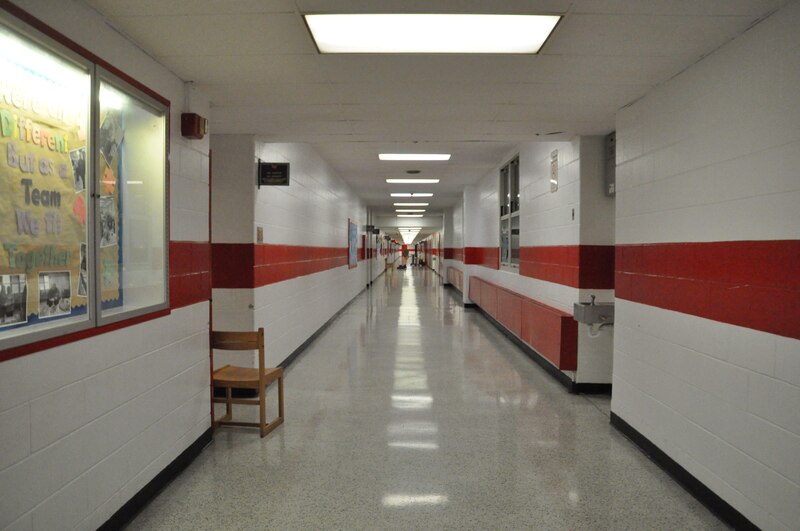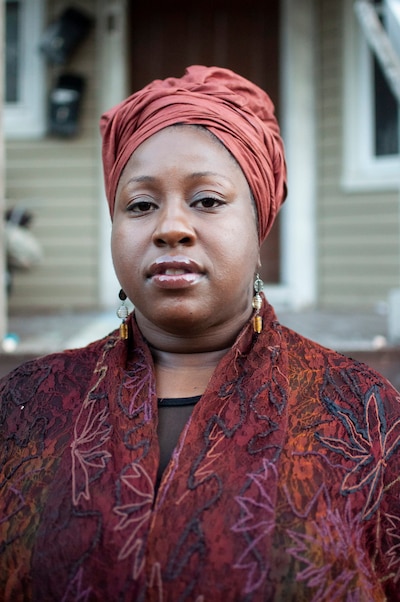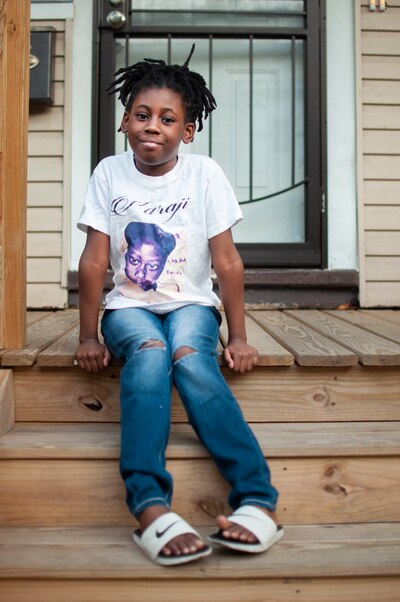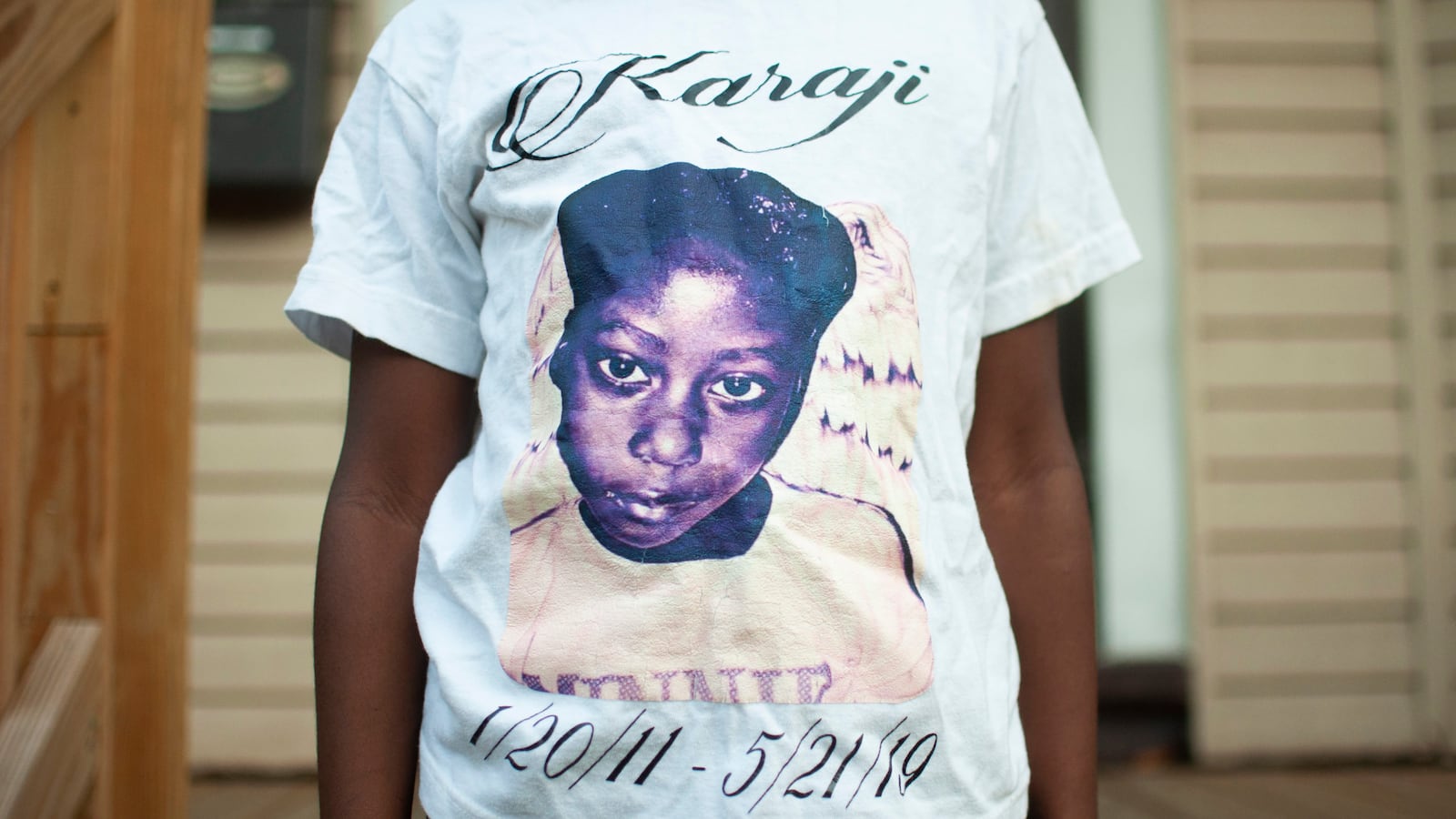Abdula Sewell did all he could to control his 7-year-old son Leland’s asthma, going so far as to take a job as a teacher’s aide at Leland’s Newark school so he could help treat the boy during attacks.
But it wasn’t enough. On a Saturday morning in December 2016, Leland had an asthma attack at home that was different from all the others. Sewell could tell by the way his son was breathing, by a look in his eyes that was “something no one would want to see in their entire life.” The father called 911 and performed CPR, but his son was pronounced dead at the hospital.
Somehow, Sewell continued working at Spencer Miller Community School, where he got to know another child with asthma, a girl named Karaji who was in the same grade with the same teacher as his son when he died. Then in May 2019, Sewell heard the unbelievable news that Karaji, too, had died. According to her mother, Karaji suffered an asthma attack at school that worsened after she was picked up, and she died at the hospital later that evening. An autopsy report said the cause of death was “acute exacerbation of chronic asthma.”
“I was saying to myself, ‘Not again, not another with asthma in the same grade my son passed away in, same age,'” Sewell recalled. “It brought back memories of my son. How could this happen? They’re only babies.”
The deaths of two children with asthma at the same Newark school just two years apart illustrate the enormity of the epidemic facing the city and the special burden schools face educating numerous students living with the illness.
Although asthma-related deaths are rare in children, Newark experienced an average of one death a year from 2010 to 2017, when there were eight asthma-related deaths among Newark minors, according to a spokesperson at the New Jersey Department of Health.
Those statistics only hint at Newark schools’ asthma challenges. About one in every four children in Newark has asthma — a rate three times higher than the national average — and those children are hospitalized for asthma at 30 times the national rate, studies show. Children across the city regularly miss school because of their asthma, and Superintendent Roger León has named asthma as one of four health issues that impede student achievement.
Officials from Newark Public Schools, including León and the principal of Spencer Miller, wouldn’t talk to Chalkbeat for this article. But it’s clear that addressing asthma will have to be part of the solution if the district is to achieve its goal of 100% attendance — and that building conditions, staff training, and parent awareness all warrant attention.
Sewell and other grieving parents say they want to help. Several of them are pushing the school district to prepare teachers better for the likelihood that they will have students with asthma — students who could easily go into distress in their classrooms.
“People need to be aware that it’s a serious disease,” Sewell said. “They’re children. It’s killing children and no one is talking about it.”
Leland’s story
Leland Goodson Sewell had been struggling to breathe since the day he was born, premature with underdeveloped lungs, in 2009.

Children who are born preterm are nearly 50% more likely to develop breathing problems. Newark has one of the highest rates of preterm births in the country.
But the boy had come a long way, launching an amateur landscaping business and earning a reputation as an entertainer, and his father said he had learned how to manage his disease.
“He knew when to sit down, when he needed to go to the nurse,” Abdula Sewell said. “He was very aware of his condition and limitations.”
Still, like any parent, Sewell worried about what would happen when his son was out of his care. So when an opportunity arose to work at his son’s school, he took it.
“It was just convenient and easier for me when he had an attack,” he said. “I would give him the treatment, or the nurse would, I’d come down with him to the nurse’s office.”
The morning Leland died, he had wanted to go out with his mother and sister, Sewell said. But the father and son stayed home to administer his asthma treatment, then sat down to watch TV. The day seemed to be proceeding normally — until Leland asked for more help.
“I noticed his breathing was deeper than it usually is,” Sewell recalled. “I told him to calm down but I saw the look in his eyes. And it was something no one would want to see in their entire life.”
Leland was pronounced dead at University Hospital. The cause of death, according to his death certificate, was “cardiorespiratory arrest.” A second line makes the underlying cause clear: “Asthma.”
A city where asthma reigns
Asthma management is complex and, as the recent death of an up-and-coming Broadway actress shows, acute attacks can result in death for people of all backgrounds. But mortality rates are higher for people of color and people living in low-income communities, as many Newark residents are.
Many factors contribute to Newark being home to a disproportionately large number of residents with asthma. In part, it’s due to the high population of Hispanic and black residents, who have higher rates of asthma. Newark residents also breathe some of the unhealthiest air in the nation, conditions that experts say contribute to the prevalence of asthma. The city houses the third-largest port and one of the busiest airports in the country, and trucks thunder through its narrow streets on a daily basis.
The city’s teachers union president, John Abeigon, said he moved out of Newark when his daughter was in kindergarten in search of healthier air. His daughter’s asthma disappeared in leafier, more affluent Maplewood, but now she is raising her own daughter in Newark, and the child has asthma.
“I know it’s because of the area she lives in,” Abeigon said. “There’s traffic 24/7 outside certain schools.”
Schools are just one facet of life for children with asthma. But the Environmental Protection Agency says that since children spend much of their days in schools, day cares, and at home, “it is important to reduce their exposure to environmental asthma triggers as much as possible in each of these environments.” Mold, dust mites, and other pests — conditions that can be found in some school buildings — can all trigger asthma episodes, the EPA says.

The condition of Newark’s school facilities has long been a struggle. Though the district requested that the state fund more than 150 capital projects in 2016, including schools with falling roofs and broken windows, the state only approved 11 projects a year later. Dozens of Newark’s crumbling schools still require major fixes.
At a board meeting in January, a district official said that at nine Newark schools, leaks have led to “possible indoor air-quality issues” due to mold.
“They need constant repairs. Students come in, and there’s dust on their desks,” said Michael Iovino, a teachers union leader who teaches at Technology High School, housed in a building that’s more than a century old. “It’s difficult to regulate temperatures in buildings, too. These are all asthma triggers. It’s definitely a challenge.”
Takua Anderson, who lost her son T’Kai in October 2016 to a severe asthma attack at home, said that while she thought her son received high-quality medical attention at his school, she fears that building conditions contributed to his asthma.
“I don’t think the air quality was the best in the school. The school was old and dusty, and he had more complaints during school than when he was home,” she said. “My son was suffering.”
To date, there’s been no documented link between the Newark children’s deaths and conditions at their schools. But experts say environmental improvements are essential to increasing the chance of bringing children’s asthma under control.
“It’s really important that we speak out and work on improving air quality to help decrease the risk of asthma mortality,” said Stephanie Lovinsky-Desir, a Columbia University pediatric pulmonologist who studies children with asthma who live in urban areas.
“It makes me sad and frustrated because there are lots of things that can and should be done,” she said. “These seem like preventable deaths.”
Uneven asthma training

That’s the point that Sewell and a network of parents and educators have been trying to make.
At a recent school board meeting, Bilal Walker, a former charter school dean, pleaded for more asthma awareness in the community. One of his former students, 10-year-old Shuaib Wright, died following an asthma attack this spring.
“In our communities, we are quick to turn our heads to asthma because it’s so prevalent and so common,” he said. “As an educator, I did not look at asthma as something that would affect a student’s attendance, their participation in class, or their focus.”
School nurses, who help students use nebulizers and call for help if attacks are too severe to manage at school, are a first line of defense inside schools. But it’s unclear if Newark has enough nurses in its schools given the severity of students’ health issues. According to state data, the city’s schools have one nurse for every 438 students — more than are recommended for healthy populations but fewer than would be needed to meet the American Academy of Pediatrics’ guideline of one nurse for every 225 students for unhealthy populations.
Additionally, state law requires annual “asthma education opportunities” for all educators, not just medical staff at schools. Constance Sensor, director of the school nurse program at Rutgers University, said New Jersey’s laws around asthma education are among the most detailed in the nation.
“Hopefully, the laws are working like they’re supposed to,” she said.
But it’s unclear if they are. What the “education opportunities” should look like isn’t spelled out in the law, and it’s unclear if they are being offered or how often at Newark Public Schools.
A decade ago, all of Newark’s public schools earned the group’s “asthma-friendly” designation, meaning that their teachers and nurses were trained to deal with asthma and there was a nebulizer at each school. The district posted photos of entire school staffs that had undergone asthma training. Now, just 11 of the 64 schools have the title, according to Torrin Davis, who manages one leading purveyor of the training opportunities, the Pediatric/Adult Asthma Coalition of New Jersey or PACNJ.

Davis said Newark schools haven’t requested an in-person asthma training in years. (The group’s funding has also declined, so it can’t offer as many on-the-ground trainings, either.)
Multiple local educators, including Abeigon, the teacher’s union president, said they hadn’t gotten any special training. Walker said that at his charter school, KIPP TEAM Academy, he had learned about the prevalence of asthma but not what to do to help students struggling to breathe. (KIPP New Jersey’s executive director said in a statement that the network complies with state guidelines about asthma training for educators.)
Iovino said he has a system in place for when students have an asthma attack — one that he’s figured out purely through experience. He sends another student to a nearby classroom to contact the main office to get in touch with a school nurse, who is located on the third floor of the building next to his. He said he has carried students experiencing severe attacks in his arms to get help.
“I can’t imagine what a new teacher would do in that circumstance,” Iovino said.
Grieving parents joining forces
Baiyinah Wright said she had wanted to do something since her son Shuaib died but hadn’t been driven to action until after hearing about the death of another child — Karaji Jones.
“That was a call to action for me,” Wright said. “My responsibility, I knew then, was to get the word out and make sure my community was properly informed.”
Karaji attended Spencer Miller, where she had the same second-grade teacher as Leland did when he died, according to both parents.
Abdula Sewell was still working at the school. He had come back after his son’s death to honor Leland’s memory.
“I wanted to show his friends, ‘Wow he went through all of that and still came to teach us.’ That’s what my son wanted me to do,” Sewell said. “The kids would walk up to me and say, ‘I miss Leland.’ I would have to say, ‘I miss him, too.’”

There, he had spotted Karaji because, unlike with most students, her asthma was impossible to miss. Since she and her twin sister developed the illness at age 3, Karaji had been hospitalized several times and wore a breathing mask to school.
“They said both of them would grow out of it,” said her mother, Jessica Washington. “Amayi grew out of it, Karaji got more of it. It got worse and worse.”
Sewell said Karaji’s death offered only the latest illustration that something needs to change in Newark.
This spring, Walker and Wright teamed up to organize an asthma awareness walk. Sewell is planning another for 2020, and he hopes to coordinate with Walker and Wright. Together, they want to alert families about the many triggers for asthma in their children’s lives and to press the city to bulk up asthma training for educators.
“Teachers try their hardest, but we don’t know everything,” Walker said. “Sometimes that physical aspect goes neglected. Now I’m aware of how severe it is, and it’s of the utmost importance for all teachers to be aware.”
They’re finding allies among local advocates for children, including Kim Gaddy, an environmental activist and former Newark school board member whose own three children have asthma. Gaddy likened Newark’s asthma epidemic to another one — gun violence — that also claims the lives of children in the city.
“Until your family member is shot, you don’t get it,” Gaddy said. “There’s no real sense of urgency until you see a child gasping for air, and you’re like, ‘What should I do?’”

